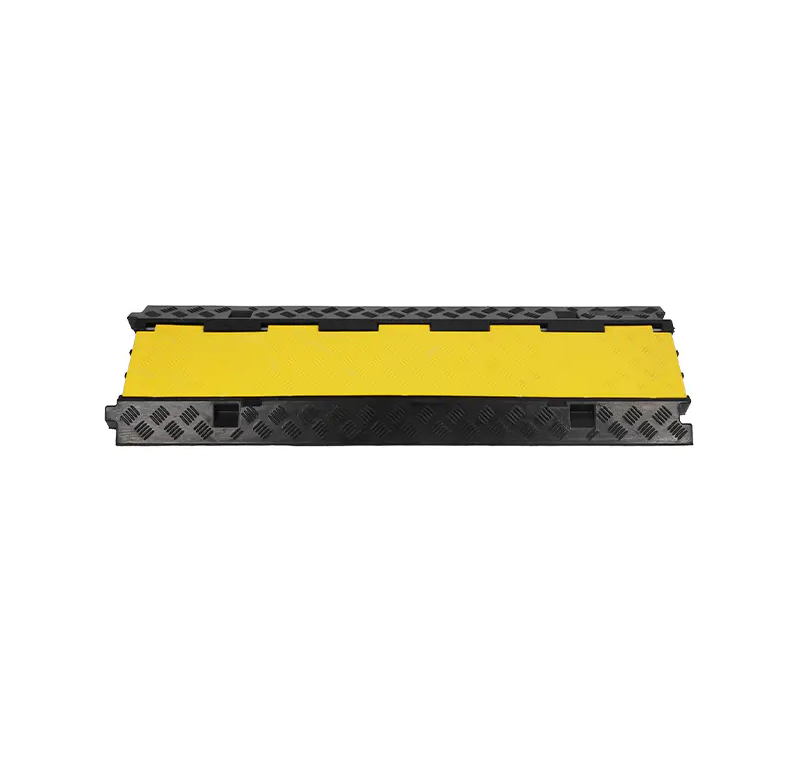How Cable Protector Ramps Perform in Harsh Environments with Exposure to Chemicals and Oils

A Cable Protector Ramp is widely used to safeguard electrical cables, hoses, and other conduits from physical damage in high-traffic areas. In industrial and commercial environments, these ramps are often exposed to chemicals, oils, solvents, and other potentially corrosive substances. The ability of a cable protector ramp to resist such exposure is crucial to maintaining both its structural integrity and the protection of the cables it covers.
Materials play a primary role in determining chemical and oil resistance. High-quality ramps are commonly made from durable polyurethane, rubber, or reinforced polymers, which provide excellent resistance to many industrial chemicals, oils, and greases. These materials do not easily degrade when exposed to corrosive substances and maintain their load-bearing and flexible properties even after prolonged contact. Some designs feature specialized coatings or additives that enhance resistance to specific chemicals commonly found in factories, workshops, or outdoor installations, reducing the risk of surface degradation or weakening.
The structural design of the ramp also affects its durability in harsh environments. Closed-channel designs and tightly fitted covers prevent chemicals and liquids from seeping into the interior, which could compromise the underlying support structure. Additionally, smooth or textured surfaces may be engineered to resist oil accumulation and facilitate easy cleaning, preventing slippery conditions and maintaining safety. Anti-slip surfaces and beveled edges further enhance stability while reducing the risk of accidents, even when the ramp is exposed to spills.
Maintenance practices can extend the lifespan of cable protector ramps in chemical or oily environments. Regular cleaning with appropriate detergents or neutralizing agents prevents the accumulation of corrosive residues and helps preserve the ramp’s flexibility and load-bearing capacity. Inspecting for cracks, swelling, or other signs of chemical attack allows for early replacement before failure occurs. Proper installation, including securely interlocking modular sections, ensures that ramps remain stable and continue to protect cables effectively, even in demanding conditions.
In environments where chemical exposure is frequent, selecting a ramp with proven chemical and oil resistance is essential. Industrial-grade polyurethane ramps, for example, are often tested against a wide range of acids, bases, and solvents to verify long-term durability. By choosing the right material and design, users can ensure that the ramp continues to perform safely and reliably, protecting both cables and personnel.
In conclusion, a Cable Protector Ramp designed for chemical and oil resistance relies on high-quality materials, protective structural design, and regular maintenance to withstand harsh environments. Durable polymers, smooth channels, anti-slip surfaces, and protective coatings allow these ramps to resist corrosion and maintain functionality over extended use. By considering both material selection and environmental factors, users can deploy ramps in challenging industrial and commercial settings while ensuring long-term cable protection and safety.
Material: 100% recycled Rubber base & PVC yellow lid
Color: Black and Yellow
Weight: 6kg
Features: Anti-Pressure
Length: 1000mm
Packing: Woven Bag
Usage: Decelerate Speed
MOQ: 200 pcs
Size: 1000x250x50mm
Function: Cable Protection
- Art
- Causes
- Crafts
- Dance
- Drinks
- Film
- Fitness
- Food
- Spiele
- Gardening
- Health
- Startseite
- Literature
- Musik
- Networking
- Andere
- Party
- Religion
- Shopping
- Sports
- Theater
- Wellness


